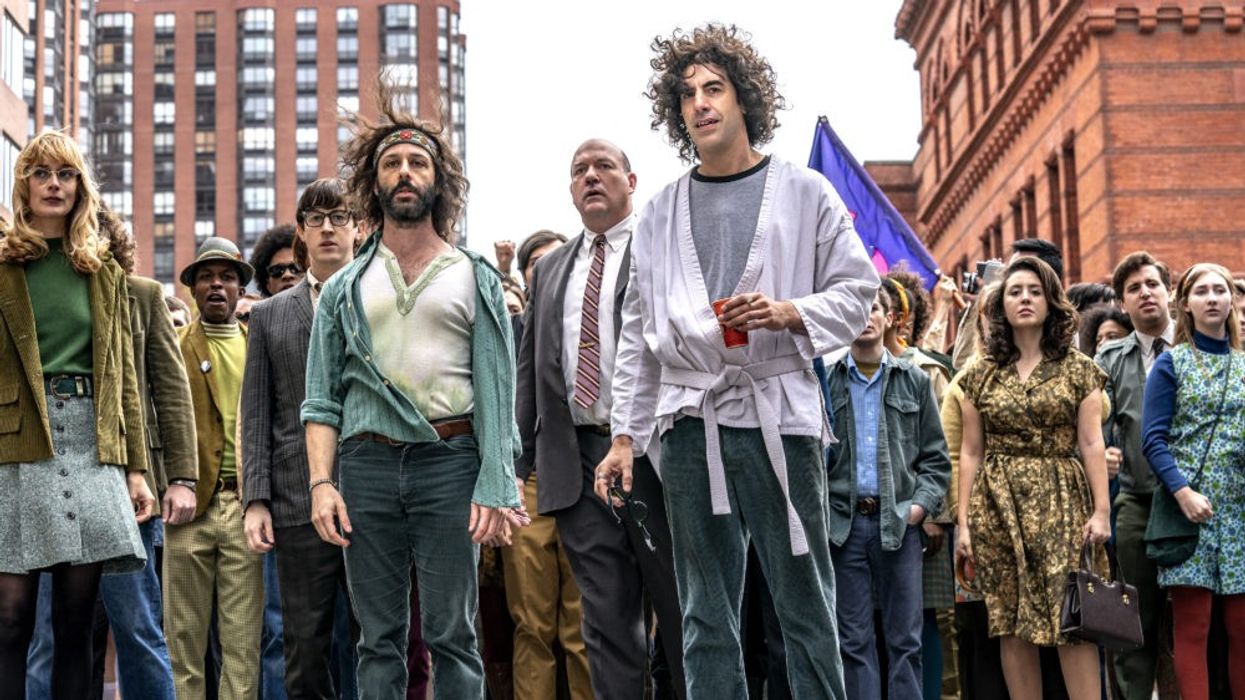Go Inside Aaron Sorkin's Brain as He Explains 'The Trial of the Chicago 7'
Writer-director Aaron Sorkin has a unique way of visualizing his world.

By now, you should have had the time to watch The Trial of the Chicago 7 on Netflix and revel in all the Sorkinisms and interesting parts of history you may have missed. But how did this project come to be? As the story goes, Sorkin was sent the idea from Spielberg and ran with it.
From that phone call came Sorkin writing and directing the feature, his follow up to Molly's Game, and partnering with Netflix for the release.
Now, go into what happened in the middle of all that, the way Sorkin synthesized the idea and how he translated it to the page.
Check out this video from Netflix Film Club where Sorkin breaks down the filmmaking process for The Trial Of The Chicago 7.
Go Inside Aaron Sorkin's Brain as He Explains The Trial of the Chicago 7
One of the most important lessons you need to learn as a writer or director is just to take on the projects you love because once you get it going, you'll be living in the world you create for a long time.
The next important lesson Sorkin talks about is allowing yourself to steal, borrow, and learn from everything you watch. Whether it be the stage, mall, or big screen, let the world really teach you something at every turn.
If you limit your influences, you'll limit your opportunities for success.
When it came time to make The Trial Of The Chicago 7, Sorkin did not limit himself. He watched movies with protests in them of every genre and learned from the scenes he thought were well executed. He also watched actual protests a lot to see how he could mimic them.
In the end, he borrowed a bit from Argo, like how they used real footage for the wide shots and then recreated close-ups, to sell authenticity to the audience.
That lesson translated into other scenes as well, like in the big riot scene. Sorkin was able to show the violence close, keep it tight, and went wide only when necessary to show the scope and scale of the insanity.
When we were wide, he wanted to make sure the images didn't beat us over the head.

This is a movie that takes place in the 60s, but it really is about today. That meant meeting with his production designer and all the people on the crew and telling them he did not want to lean into the 1960s iconography.
Instead, he wanted the production design to reflect the power of the government and of oppression. That's clear in the courtroom, which is not historically accurate but made sense for the tone and experience Sorkin wanted the audience to have.
When all else fails, sometimes it's the details that pull you through. For Sorkin, this meant learning to understand the sound department and realizing they are the unsung heroes of any project.
They, along with the score, help set a mood in certain scenes that are pervasive throughout the story.
Lastly, though you want to control every detail, a director's job is to trust their department heads. That means when someone wants to try something, you listen. Sorkin learned this in the edit, where he was able to see new dimensions of what he had written in the screenplay.
Even as they rehearsed on set, he was flexible enough to find the best way to do things, not necessarily the way things are written.
I'll end with a universal truth. Find why this project is important to you, find the message that it promises to tell, and make sure every decision is made through that. It will be your North Star in production and lead to the best possible outcome.
What's next? Get our free screenwriting eBook!
Reading about Sorkin gives you the writing itch? So much of what we're talking about on No Film School when it comes to screenwriting is summarized in our new eBook. It also helps guide you through a 10-week writing plan that will get your script actually finished.
Source: Netflix Film Club











